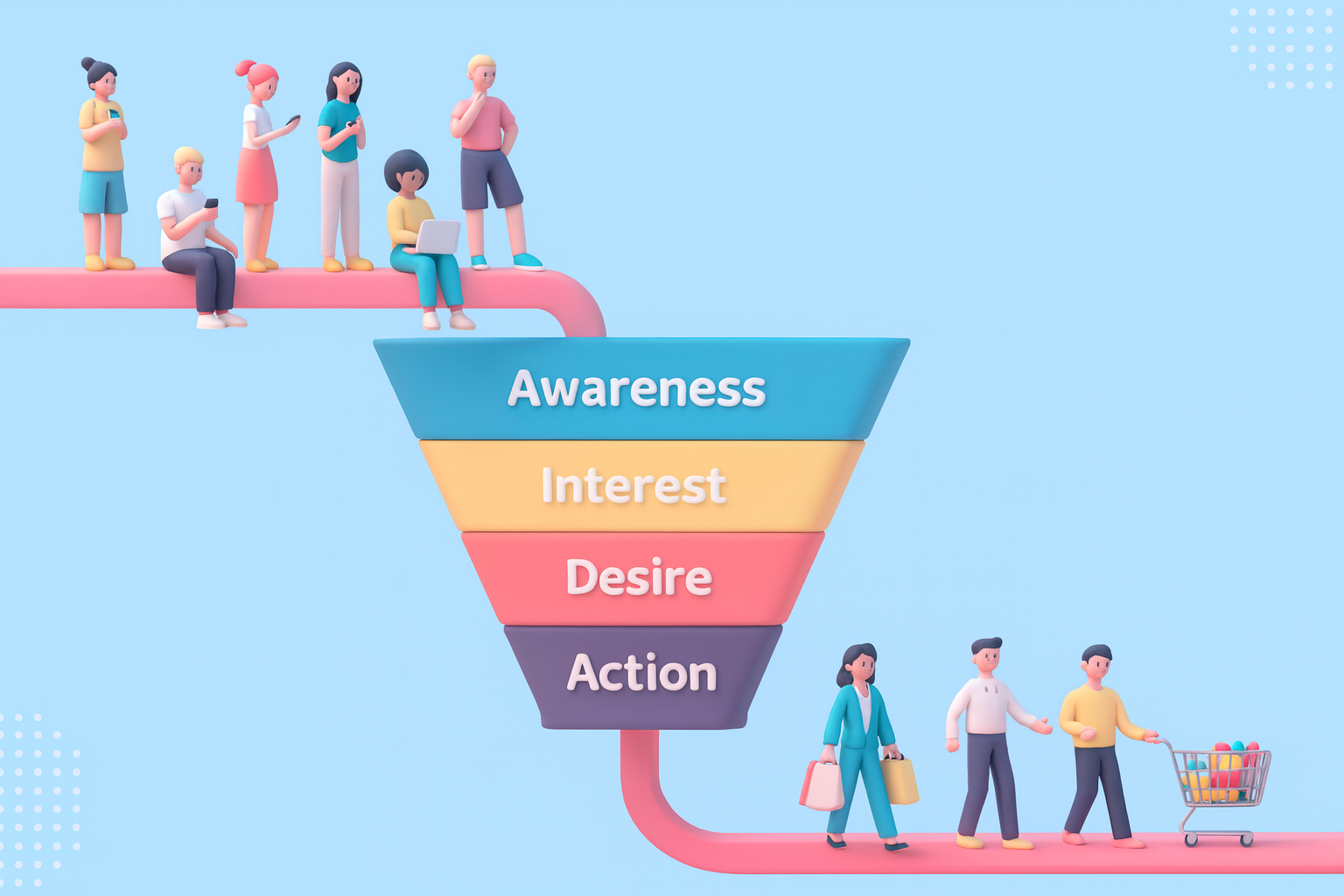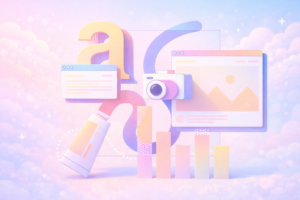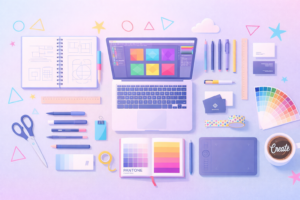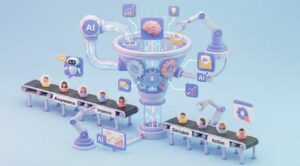A high-converting digital marketing funnel is one of the most powerful tools for generating leads, nurturing prospects, and driving business growth.
Now brands can no longer rely on random marketing efforts. They must strategically guide prospects through every stage of the funnel. This includes moving them from awareness to conversion.
They must use the right mix of content, channels, and messaging. A well-structured digital marketing funnel ensures consistent results. It provides predictable revenue. It also fosters stronger customer relationships.
Let’s break down how to build one that converts at every stage.
What Is a Digital Marketing Funnel?
A digital marketing funnel is a structured path that users follow. They move from first discovering your brand to eventually becoming customers. It outlines how people move through various touchpoints. It identifies what motivates them to take action.
The funnel typically includes four core stages:
- Awareness (Top of Funnel – TOFU)
- Consideration (Middle of Funnel – MOFU)
- Conversion (Bottom of Funnel – BOFU)
- Retention (Post-Conversion)

Each stage requires specific content and strategies. Communication must be tailored to the user’s current needs and mindset.
Why Businesses Need a High-Converting Funnel
A robust digital marketing funnel is crucial for driving growth.
- It aligns marketing with buyer psychology.
- It improves targeting and message clarity.
- It reduces Customer Acquisition Costs (CAC).
- It boosts conversion rates across the board.
- It helps scale revenue predictably.
Most businesses struggle not because of low traffic. They struggle because they lack a clear, optimized, and connected funnel.
Stage 1: Awareness – Attracting the Right Audience (TOFU)
The funnel begins by capturing attention. Your goal is to help potential customers discover your brand. They must understand the specific problem you solve.
The critical first step is defining your Ideal Customer Profile (ICP). You must create a detailed Buyer Persona. Without this foundation, all traffic generated may be wasted.
🎯 Precision Targeting and Content Mapping
Before deploying any tactics, you must clearly define who you are targeting. This includes their demographics and psychographics. You need to know their primary pain points. You must know where they consume information online.
- Pain Point-Focused Content: Shift the focus away from your product features. Instead, address your audience’s most pressing questions. Examples include “How to fix X” or “Best practices for Y.”
- Channel Mapping: Identify which digital channels your ICP naturally spends time on. A B2B audience often prioritizes LinkedIn and Google Search. A B2C audience might frequent Instagram, TikTok, or YouTube.
- Initial Engagement: Content at this stage should be easily digestible and shareable. Think short-form video or visually appealing infographics.
Effective Awareness Tactics
- SEO-Optimized Blog Posts: Target long-tail keywords that solve specific user problems.
- Social Media Content: Utilize platform-specific formats like Reels and Carousels to drive initial discovery.
- Paid Ads (Search & Social): Use lookalike audiences and interest targeting for efficient prospecting.
- Thought Leadership: Use podcast appearances and PR to establish authority.
What Awareness Content Should Achieve:
- Build initial trust and establish brand authority.
- Educate prospects on the underlying problem or opportunity.
- Capture interest and drive website visits for deeper exploration.
You can understand search behavior and discover high-value keywords by analyzing Digital Marketing Trends. Tools like Google Trends are useful for this.
Stage 2: Consideration – Educating & Nurturing Leads (MOFU)
Once users know your brand, they enter the evaluation stage. They compare solutions and research credibility. The primary objective here is Lead Magnet Conversion. You must convert a visitor into a known lead by capturing their email address. The focus shifts to intensive nurturing.
🔑 The High-Value Lead Magnet
A lead magnet must offer immense, immediate value. This is the required exchange for their contact information.
- Actionable Checklists & Templates: These are practical and popular B2B magnets.
- Comprehensive E-books & Guides: These position your brand as the industry expert.
- Free Tools/Calculators: These offer instant utility and data analysis.
- Exclusive Training Videos: High-value, in-depth instructional content.
Best Consideration Content for Nurturing
Once you have the email, the relationship deepens through automated sequences.
- Email Nurture Sequences: A planned series of 3-7 emails. They deliver value, address common objections, and soft-sell the solution.
- Case Studies: Detailed accounts of how you solved a customer problem. These must be relatable to the prospect’s industry or size.
- Webinars and Workshops: Interactive content where leads can ask questions directly.
- Product Demo Videos: Clearly explaining the process of how your product works.
Your Message Should Focus On:
- How your solution works to achieve tangible, measurable outcomes.
- Why your approach is genuinely superior to alternatives (your competitive edge).
- Proof, data, and customer success stories to build essential social proof.
A strong content strategy is crucial for effective user nurturing. This guide by HubSpot offers helpful marketing insights for building a robust content strategy.
Stage 3: Conversion – Turning Leads into Customers (BOFU)
This is the decisive stage. You motivate the user to take the final step: purchase, subscription, or sign-up. Your goal is to remove all perceived friction. You must reinforce the final, irresistible value proposition.
🚀 Optimized Landing Page Strategy
The conversion landing page must be a single-focus entity. It should contain zero unnecessary distractions.
- Clear, Benefit-Driven Headline: Immediately state the value of the final offer.
- Compelling Copy: Use bullet points to highlight the top benefits.
- Prominent Social Proof: Include testimonials, trust badges, or specific success metrics.
- Strong, Contrasting CTA: Use action-oriented language, such as “Start Your Free Trial Now.”
High-Converting Conversion Tactics
- Time-Sensitive Offers (Scarcity): Limited-time discounts or bonuses to prompt immediate action.
- Free Trials / Guarantees: These eliminate the perceived financial risk for the buyer.
- Live Demos or Consultations: Offer a personalized 1:1 experience for high-value products.
- Retargeting Ads: Serve highly specific ads to leads who abandoned the checkout or sign-up process.

Use These Techniques to Increase Conversions:
- A/B Testing: Continuously testing headlines, CTA colors, and copy elements.
- Personalized Offers: Tailor the final pitch based on data gathered during the Consideration stage.
- Friction Reduction: Ensure the sign-up form is short, and the site loads instantaneously.
Stage 4: Retention – Turning Customers Into Repeat Buyers
A high-converting funnel is a virtuous loop; it doesn’t end at the sale. Retention creates immense long-term value. It turns satisfied customers into powerful brand advocates.
Retention Strategies for Lifetime Value (LTV)
- Seamless Onboarding: Ensure the customer gets immediate, clear value from their purchase. This dramatically reduces early-stage churn.
- Personalized Email Workflows: Post-purchase sequences offering tips, advanced feature usage, or complementary product recommendations.
- Active Feedback Loops: Solicit reviews and use Net Promoter Score (NPS) surveys to gauge satisfaction.
- Loyalty Programs: Reward existing customers with exclusive discounts or early access to new features.
Why Retention Matters:
- It costs 5x more to acquire a new customer than to retain an existing one.
- Repeat customers typically spend more over time.
- Loyal customers become brand promoters, generating the most valuable form of Awareness: word-of-mouth referrals.
Mastering these concepts is essential for long-term, sustainable growth, and earning a digital marketing certification can further strengthen your expertise and credibility in the industry.
Analyzing & Optimizing Your Conversion Engine
A funnel is never finished or “complete.” It must be consistently tested, measured, and improved. This continuous refinement is the true source of consistently high conversion rates.
Measure These Key Metrics
- Click-Through Rates (CTR): Measures interest in the initial content.
- Lead Conversion Rate: The percentage of visitors who become known leads.
- Lead-to-Customer Conversion Rate: How many captured leads become paying customers.
- Customer Lifetime Value (CLV): The total revenue a customer generates over the entire relationship.
- Cost Per Acquisition (CPA): The total cost required to gain one paying customer. For a healthy business, CLV must significantly exceed CPA.
Use Essential Technology (The MarTech Stack)
- Google Analytics: For robust tracking of user flow and drop-off points.
- A Marketing Automation/CRM: To manage leads, track interactions, and automate email nurturing sequences.
- A/B Testing Platform: For systematically testing variations in landing page elements.
- Heatmap/Session Recording Tools: To visually identify where users click, scroll, and abandon pages.
These tools provide the insights needed to plug the specific holes where prospects are dropping off. This ensures that every part of the funnel is performing optimally, boosting overall ROI.
Conclusion
A high-converting digital marketing funnel is essential for attracting, nurturing, and converting customers in a structured and predictable way.
By mastering the detailed strategies across the Awareness, Consideration, Conversion, and Retention stages, businesses can improve engagement, lower acquisition costs, and achieve long-term, sustainable growth.
When built strategically and optimized consistently, a digital marketing funnel becomes one of the most powerful engines for scaling any online business.








